How to reach here:
By Air: The nearest airport to Bikaner is Jodhpur, which is nearly 250 km away. This is a domestic airport, connecting to metros in India and some few other cities in North.
By Rail: Bikaner railway station is well connected to the cities of Delhi, Jodhpur, Jaipur, Kalka, Howrah and Bhatinda.
Best time to visit: October to March.
Languages spoken: Hindi, Rajasthani, Marwari and English.
Must eat: Aloo Bhujias,Sattus and Rasgullas.
Famous Restaurants: Gallops, Hang around zone, Konark Rendezvous, Laxmi.
Places you must visit:
Junagrah Fort, a historic fort is one of the most impressive fort in Rajasthan. Junagarh fort and it's palaces were built between 1588-1593 by Raja Raj Singh, a general in the army of the Mughal emperor Akbar. Junagarh Fort has remained unconquered till date. This fort has a 96 meter long wall to protect 37 palaces, temples and pavilions within it. The 37 bastions guard the fort and only two gates provide the access inside the fort. The main entrance of the fort is Suraj Pol or Sun Gate. The palaces, exquisitely built in red sandstone and marble are ornate with mirror work, carvings and paintings. There are about 37 palaces, temples and pavilions built inside the fort which are made up of red sandstone. The palaces have exquisitely carved windows, balconies, towers and kiosks.The interiors of palaces is done by lacquered furniture, mirror work, murals, gold polish, enamel work, shell finish and lime plaster. Inside the fort you will be able to see the low bed of the Maharajas decorated with mirrors, Durbar and coronation halls, medieval Mughal swords, Second World War plane, miniature paintings of the Bikaner school and an oil painting of the Versailles treaty. The fort museum has an extensive collection of illuminated manuscripts, jewellery, jars, carpets, arms and weapons, treaties and rare antiques. The fort encompasses many palaces among which the most spectacular ones are the Chandra Mahal or Moon palace, the Phool Mahal or Flower palace, the Anup Mahal, Gaj Mandir and Har Mandir. The mirrors, paintings and carved marble panels in the Moon Palace or Chandra Mahal are splendid. It has paintings on lime plaster walls. The Phool Mahal or Flower Palace is more elaborately decorated with mirror and glass work. The victory over Aurangzeb was celebrated by building the Karan Mahal. The Har Mandir is the place where marriages, births and Gangaur festivals were celebrated. The Gaj Mandir has an ivory inlaid bed, beautiful swing seat, silver chairs and polished wooden chests and cupboards. The Anup Mahal houses the gorgeous and opulent coronation room in rich glowing red and gold. Magnificent doors with beautiful raised lacquer work, ornamented with opaque glass inlay work, impart a jewel-like opulence to this royal chamber. The Anup Mahal was the governance chambers for the rulers. The beautifully maintained rooms now display the treasures of the Royal family.







Gajner Palace, a unit of HRH Group of Hotels is an incomparable jewel in the Thar Desert. This palace is built on the embankment of a lake by H.H. Maharaja Sir Ganga Singhji of Bikaner. Gajner Palace is situated about 30 km from Bikaner in Gajner and spread over 6000 acres of land. Gajner is located near Kolayat, an old historic village with a holy lake (Kapil Sarovar) and numerous temples. Gajner attracts thousands of pilgrims especially during Kartik Purnima on full moon day between October and November Gajner Palace was earlier used by the former Maharajas as a hunting lodge and various British dignatories also visited during the British Raj System.During the reign of Maharaja Ganga Singhji, this palace was used for duck and Imperial Sand Grouse shooting and lavish Christmas season was often celebrated with great fun and frolic and both, entertainment.national and international kings.Gajner Palace is divided into five different wings which are Dungar Niwas, Mandir Chowk, Gulab Niwas, Champa Niwas and Sardar Niwas. The hotel offers 31 well appointed rooms and suites. Each suite has been meticulously restored to its original grandeur. In Gajner Palace, one can also view the photographs of the days of the British Raj System which have been meticulously arranged in the corridors.






Karni Mata temple is situated in Deshnoke, a small town near Nokha in Bikaner district. Karni Mata Temple is dedicated to Karni Mata, a famous mystic of her times, believed to be an incarnation of goddess Durga. Legend goes that she foretold the victory and success of Rao Bika and the prophecy came true. Today along with her, thousands of rats are revered here. This strange mode of worship owes to the belief, that the souls of her devotees are housed in these rats, and consequently they must be protected and well fed. The main entrance of the temple is intricately carved in marble. Karni Mata laid the foundation of Deshnoke and her principal followers, Charans as well as the rulers of Bikaner worshipped her as a goddess. The story of the temple is that a woman brought the body of her recently dead son to Karni Mata and asked her to restore the boy to life. Karni Mata fell into a deep trance and encountered Yamaraja, the lord of death. But he told her that the boy had already accepted another body and could not be recalled. Karni refused to accept this and said that Yamaraja would no longer govern her tribe of Charans. At death they would enter the bodies of kabas or sacred rats, and when the rats died they would be reborn as Charans.




Jain Temple is one of the beautiful shrines in Bikaner, which is dedicated to the 5th tirthankar of the Jains, Shri Sumatinathji.It was constructed in the 15th century. The ancient shrine is believed to have been constructed in the 15th century and is frequented by Jain devotees.The Jain temple is beautifully constructed using sandstone and white marble. Religious carvings, leaf paintings, fresco and beautiful mirror work on the shrine are the highlights of the shrine.


Bhandasar Jain Temple is among the major tourist attractions of Bikaner that was constructed in the 15th century. This ancient temple of Bikaner was constructed by It was constructed by a Jain merchant, Bhanda Shah,. It was built in honour of the 23rd Jain tirthankar, Parsvanathji.The shrine is built with red sandstone and is divided into three floors. While visiting the shrine to pay homage, travellers can sight beautiful city of Bikaner from the topmost floor of the temple. Wall paintings, carvings, gold leaf paintings, rich mirror work and Usta art of the temple draw attention of tourists.
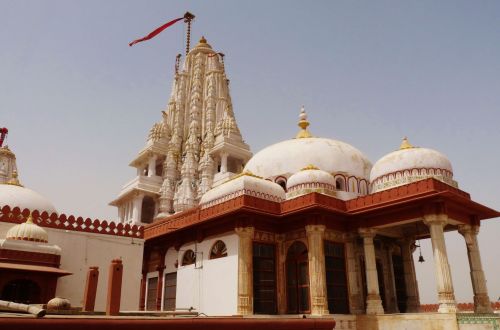



Shiv Bari Mandir is one of the revered shrines of Bikaner, which is dedicated to Lord Shiva. Situated at a distance of 6 kilometres km from Bikaner, the holy shrine was built in 19th century. The shrine is beautifully constructed in red sandstone. as per religious traditions of the region.Maharaja Doongar Singh Ji erected this temple in memory of his father Maharaj Lall. Shiv Bari Temple is renowned for it’s beautiful miniature wall paintings and Nandi Bull facing shivalingam.
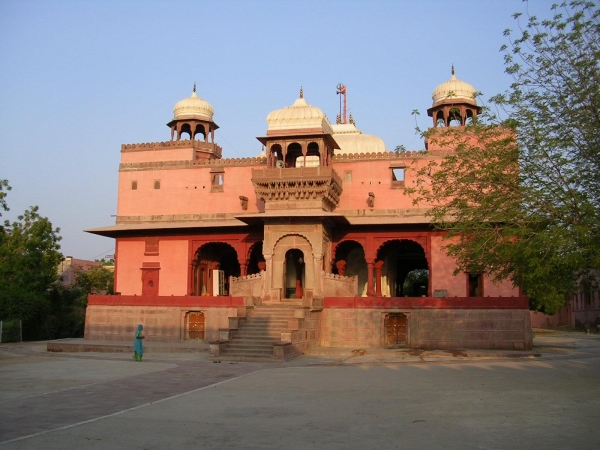
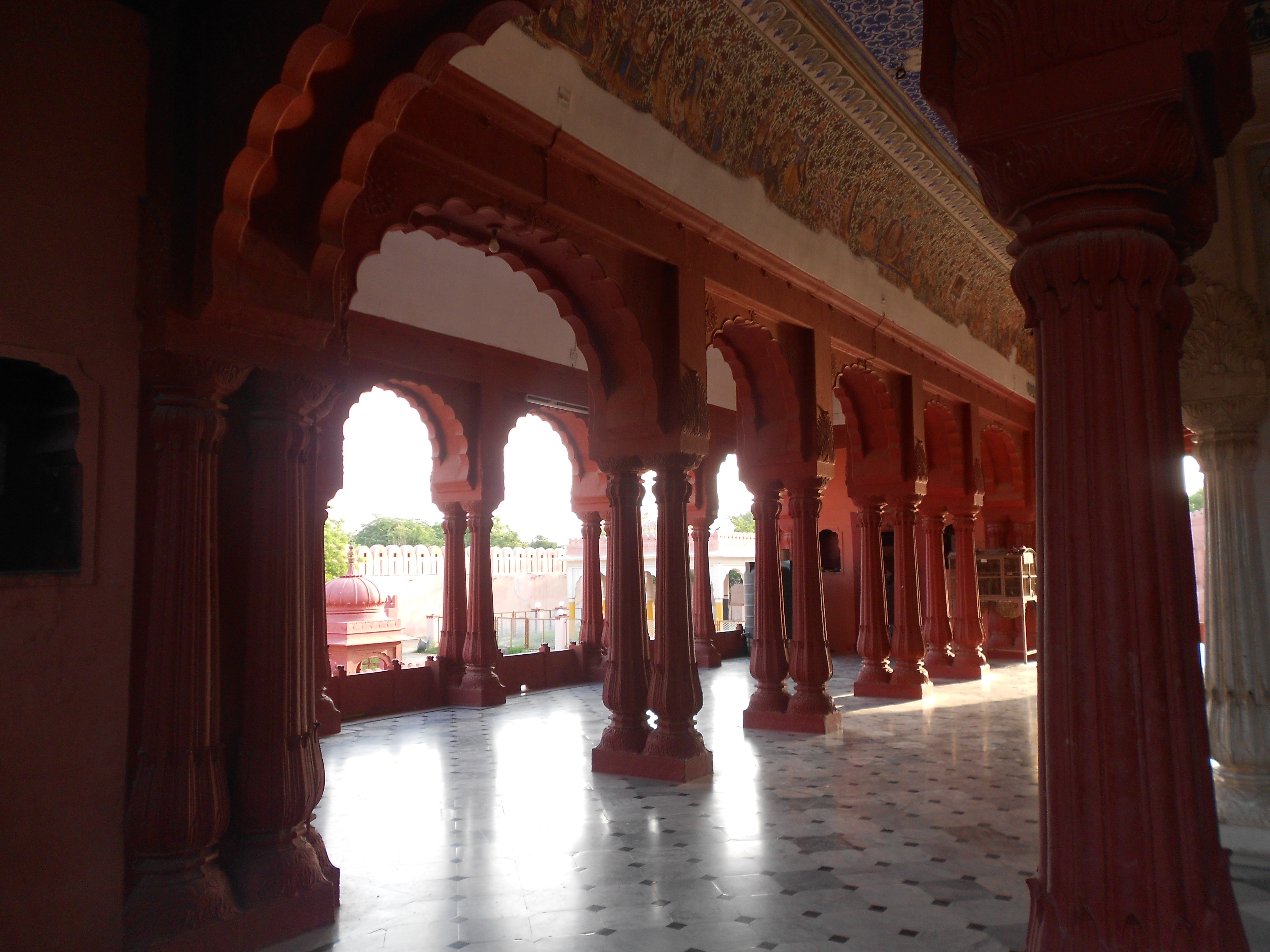
Sadul Singh Museum is among the major sightseeing attractions of Bikaner, which is situated within the Lalgarh Palace. The art museum is dedicated to the successive kings of Bikaner., which include Maharaja Ganga Singh, Sadul Singh and Karni Singh. A vast collection of Georgian paintings, artefacts, photographs and hunting trophies are put on display for tourists in the gallery. Moreover, the museum has separate section dedicated to each king displaying their life and heroic deeds.


Lalgarh Palace is one of the chief testaments of the city that was built by Maharaja Ganga Singh in 1902. He built this palace in the memory of his father Maharaja Lal Singh Ji. The palace is an architectural marvel and is beautifully constructed using red sandstone.This architectural testament was designed by Sir Swinton Jacob and is famous for it’s craftsmanship. Chief attractions of the historic monument are the latticework and filigree work in sandstone. The architectural works are the combination of Rajput, Mughal and European style of architecture.Overhanging balconies and delicate latticework of the palace draw the attention of tourists. Apart from this, the gardens with dancing peacocks and bougainvillea are the other attractions at theattract visitors to the Lalgarh Palace.



Prachina Museum is one of the chief repositories of ancient articles and historical artefacts. Situated within Junagarh Fort, The museum was established in 2000 by Siddhi Kumari, daughter of Late Maharaja Narendra Singh Ji of Bikaner. There are several sections in the gallery housing a rich collection of royal costumes, religious accessories and textiles. Besides, the cultural centre also portrays crafts, articles and artefacts belonging to the ancient era.The museum also has the traditional ladies' ensemble called Poshaks., which are the last remnants of the traditional designing style of Rajputana Kingdom. Family portraits of the former rulers of Bikaner are also displayed in the museum.



Devi Kund Sagar is a royal crematorium that has several ornamented cenotaphs, known as Chhatri. These cenotaphs are tribute to Bikaji dynasty that lasted between Rao Kalyan Singh Ji and Maharaja Karni Singh Ji.Various chhatris like the Devi Kund Chhatri and Maharaja Suraj Singh's Chhatri are the most beautiful among all and are a finest example of architecture . Besides, there is a large collection of Rajput paintings on the ceiling that draws attention of tourists .

Shri Laxminath Temple is one of the oldest religious centres in the region that was established by Maharaja Rao Lunakaran in the period between 1504 and 1526. There are several shrines and figurines of the deities, which include Vishnu and Laxmi belonging to the medieval times.As the rulers of Bikaner territory regarded Lord Laxminath as the King of Bikaner and themselves as his ministers, Tthe temple was constructed as a seat of Laxminathji. Along with the throne of Laxminathji with the, idols of God Vishnu and Goddess Laxmi were also installed.



Gajner Wildlife Sanctuary is a popular site in Bikaner among wildlife enthusiasts. The reserve was a royal hunting ground in yesteryears for Maharaja of Bikaner. Besides, the beautiful reserve in the lake draws attention of the tourists.To escape from the heat of summers, Tthe site is flocked by several species of wild animals, reptiles and birds. Along with this, Imperial Sand Grouse flocks the place during winters. To the delight of wildlife enthusiasts, Species such as Wildfowls, Deer, Antelope, Nilgai, Chinkara, Black Buck, Desert Foxes and Wild Boars can be spotted at the reserve.
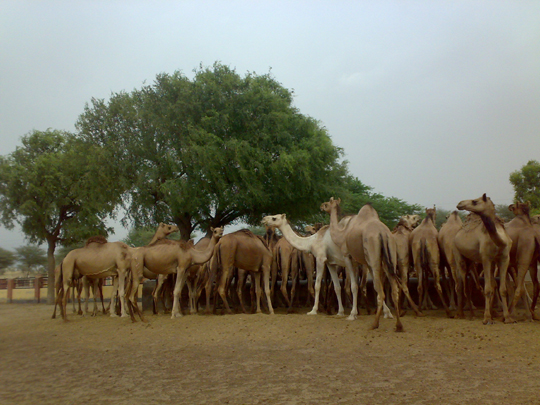
Ganga Singh Museum exhibits an extensive array of archaeological discoveries from the dating back to Harappan and early Gupta period. The museum was established by former ruler of Bikaner, Maharaja Ganga Singh in 1937.Paintings, art and craft, terracotta, pottery, carpets, coins and ancient Rajput weaponry are displayed in separate sections in the museum. Highlights of the gallery are the gilded golf leaf paintings on camel hides of Usta craftsmen and Silk Robe of Shahzada Saleem.The red sandstone building of the museum displays articles, hunting trophies and archaeological evidences of civilisations. flourished in the region between 320 A.D. and 1200 A.D. The first level of the museum is adorned with portraits of the Maharajas of Bikaner and several English dignitaries. Whereas, the second level houses artefacts and crafts of wood, metal and glass.

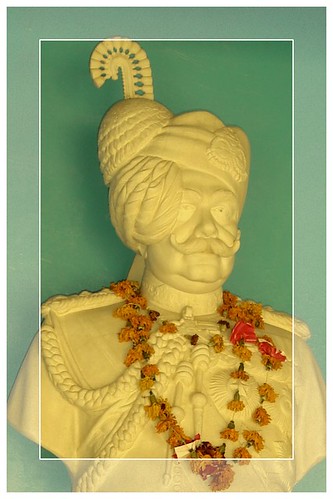
Kolayat Temple is associated with the life of Kapil Muni, who is believed to have attained salvation at the site under a Banyan tree. This beautiful temple is constructed using marble and sandstone. The major attractions of the shrine are the pavilions bathing ghats.On the occasion of Karthik Purnima, a grand fair is held annually. The fair is attended by thousands of devotees to take a holy bath in the Kolayat Lake, also known as Kapil Sarovar. Water of the lake is revered for it’s religious significance.

Camel Breeding Farm, popularly known as Government Camel Breeding Farm, is one of the largest camel breeding farms of Asia. It is situated in Jorbeer at a distance of 8 kilometres km from the city centre., breeding farm was founded in 1984 by the Indian Council of Agricultural Research.Spread over an area of 2,000 acres of semi arid land, the centre is engaged in breeding and training of camels. Along with breeding and training, The centre also conducts research and experiment on the camels. In yesteryears, the centre as well as trained and tamed camels for fighting.

original paintings in india
ReplyDeleteHi,
i gone through your website about original paintings in india its wonderful.if you want additional information about original paintings in india visithttp://www.monalisaarts.com/products.htm